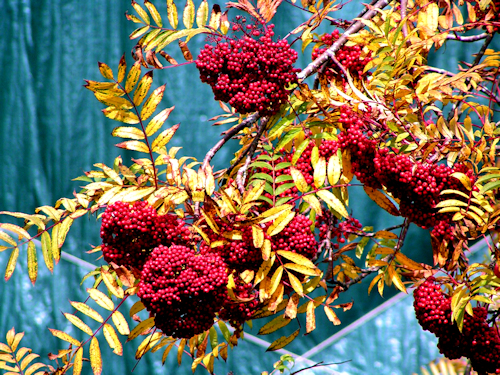
The wind roared through the trees on our mountain homeplace today. It wasn’t as strong as a few days ago when gusts were above forty miles per hour. Such winds can be rough for weaker trees when the frozen soil is thawing and wet from melting snow. One of our mountain ash trees has been declining in the past few years. Some of its several trunks had begun showing signs of age (we planted the trees more than thirty years ago) and a number of its branches had already died. The wind was too much for this tree. When we saw it the next day, it was leaning at a forty-five degree angle, partially touching against the side of our little barn and threatening to fall across part of our garden fence.
Reluctantly, we acknowledged it was time to take action; the tree had to come down. We hated the prospect of losing this tree. It and all of our mountain ashes have been favorites, both for us and for the many birds who visit. It sits about thirty feet from our deck, a good distance for the birds to grab a few seeds from a feeder and fly to a nearby ash branch to eat in peace. The tip of the highest branch has also been a choice perch for one of the hummingbirds. It sits there and watches for another hummingbird intruding into its territory and then swoops down to assert its claim. This ash tree is also clearly visible from our windows and deck, its bright red clusters of berries particularly striking in the fall and early winter. The berries are also a favored food for migrating robins, cedar waxwings, and evening grosbeaks. We’ve had flocks drop in suddenly and consume the entire crop in a day, a real treat to see.
But today we had to remove this tree. Perhaps it can be replaced by one of the seedlings that had sprouted from berries dropped beneath its branches in past years. I pulled up twenty or so last fall and transplanted them to a small bed with the plan to plant them when the older trees died. We’ll see how that works out when spring hopefully brings the new growth.
Cutting and removing the tree was not the easiest of tasks today. It wasn’t nearly as cold as it has been during the past couple of weeks, but the temperature was still not much above freezing and the wind was brisk. The snow still on the ground made the sloping hillside slippery and the slush created by the brief period of sunshine quickly made boots and gloves wet and chilly. It also wasn’t the best of conditions for climbing even a short distance up the ladder, the base of which was resting on the previously mentioned slippery snow. But there were no mishaps.
Since the tree was leaning against the barn and partially overhanging the fence, I didn’t want it to continue falling in the direction it was headed. I secured a heavy rope around the two trunks and another rope around one of the foundation posts of our deck. Between the two ropes, I fastened a come-along, a hand-operated winch that enabled me to put some backward pressure on the tree trunks. I didn’t want the tree to fall farther toward the fence. Climbing the ladder with chainsaw in hand (never something I feel comfortable doing), I cut off the topmost branches that were the greatest threat to the fence. One branch landed partly across the fence but the heavy taut wire along the top of the fence supported the weight until we could move the branch. After the top branches were gone I cut sections farther down the trunks, a much simpler job since some of it could even be done from the ground.
So the tree is gone. Its familiar spot looks awfully empty after being occupied all these years by our beloved mountain ash. Memories remain—and pictures. I didn’t take photos of the process of cutting the tree, but I did take many of the tree itself, as a memorial to the tree and all the life forms it supported. I delight in the intricate patterns in the bark of our trees and the lichens and mosses which grow on their trunks and branches. These things are some of my favorite photography subjects. Here are a few of my photos of our beautiful mountain ash tree. They may appear to be abstract designs, but all are completely natural—nature in its amazing wonder. I hope you enjoy them as I do.
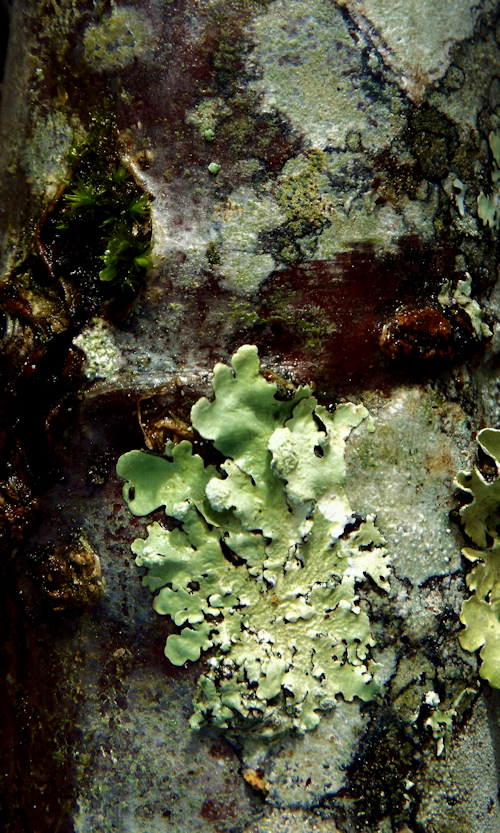
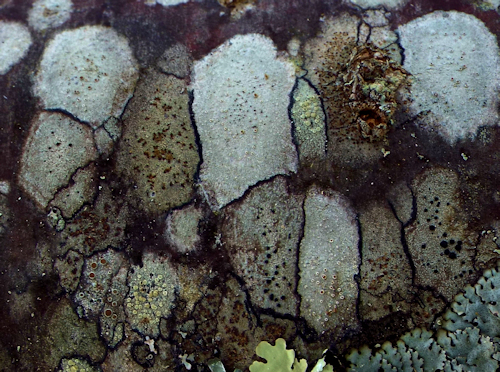
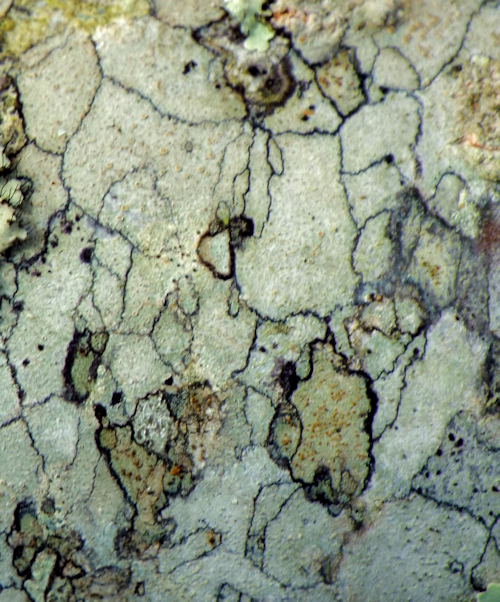
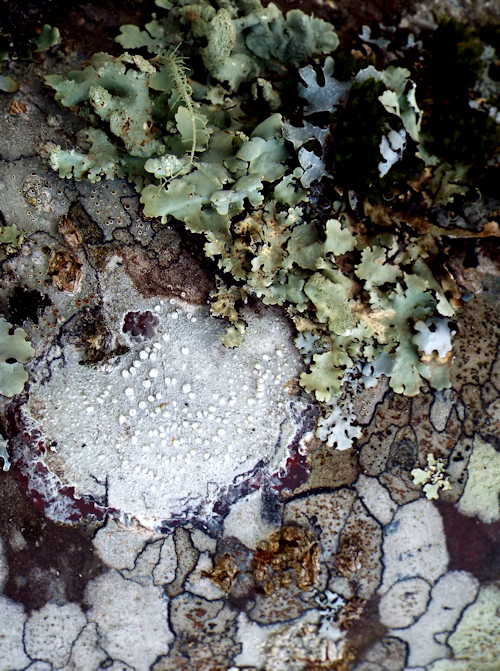
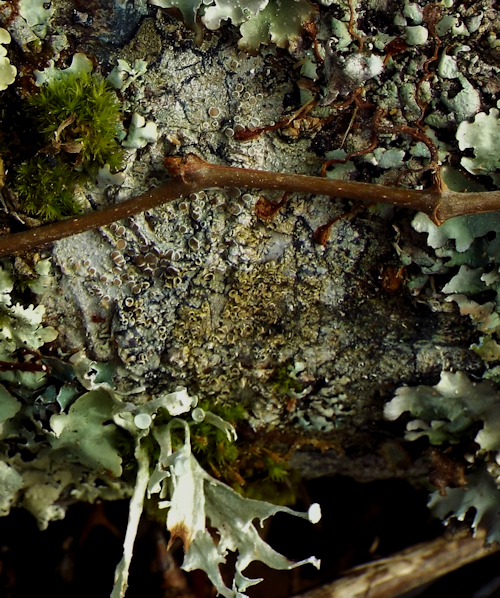
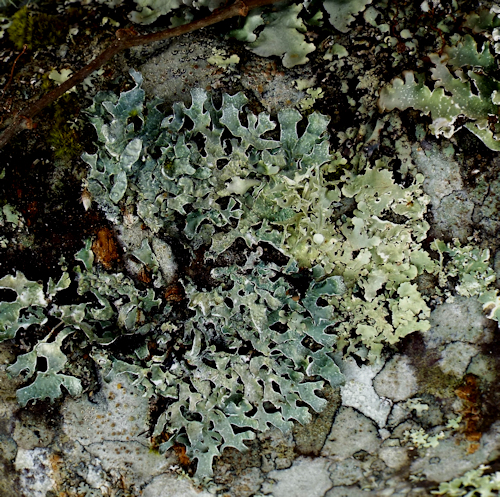
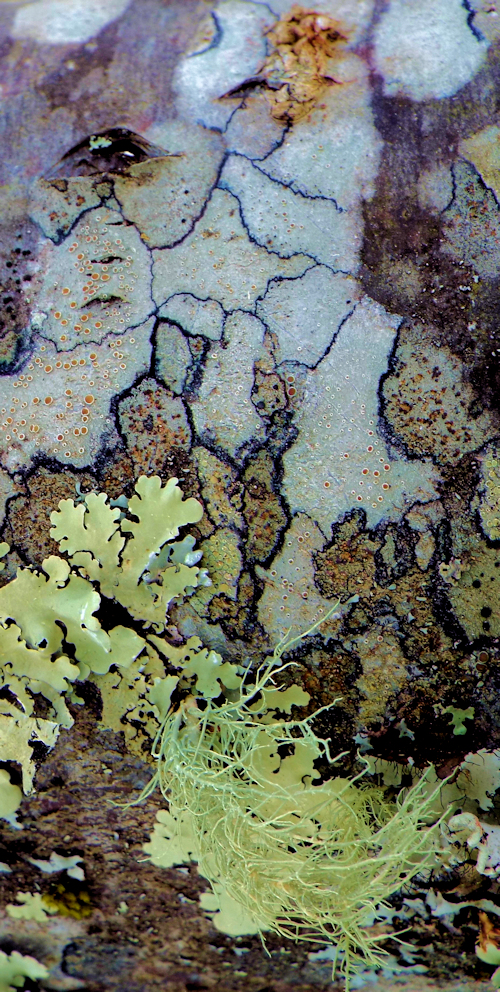

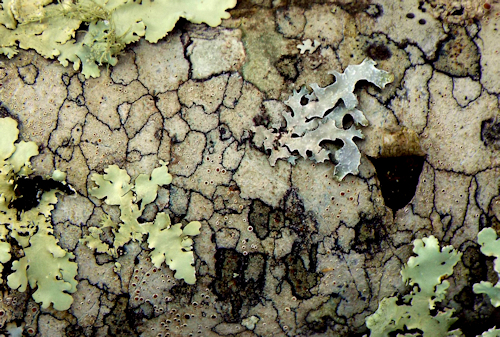
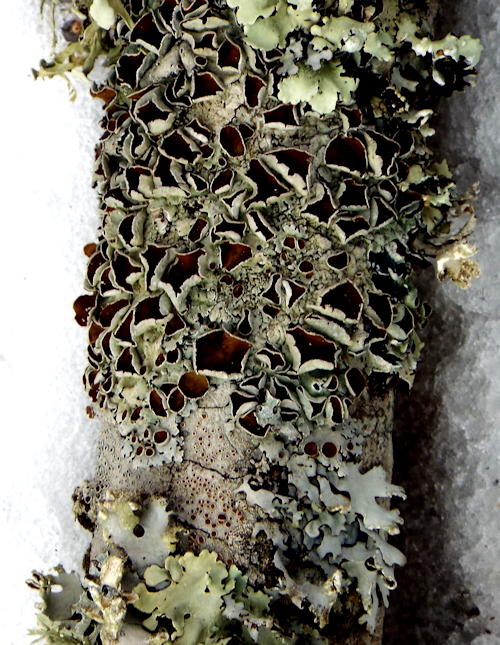
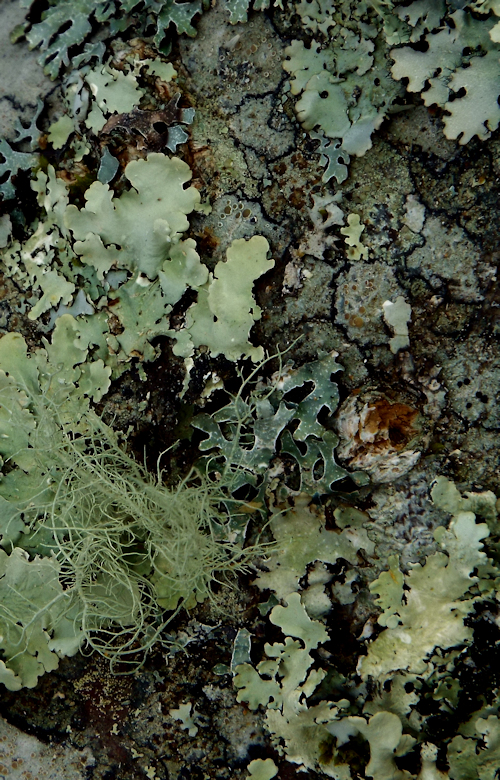

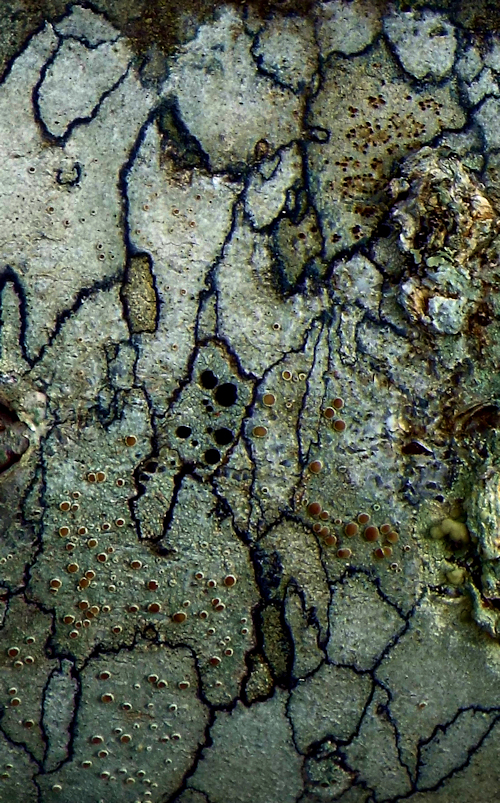
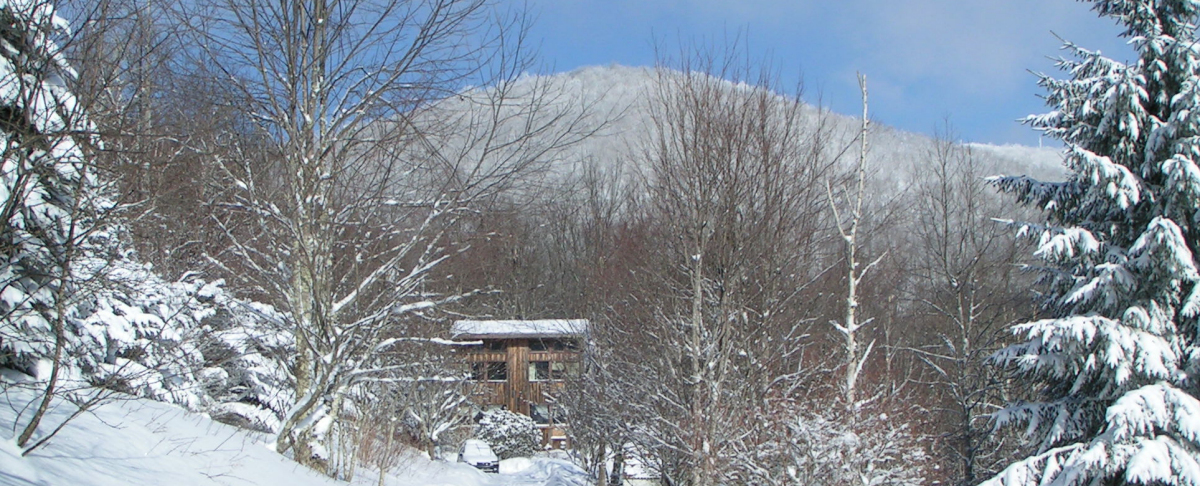
Gorgeous, just gorgeous. Love your eye for the details of Nature!
Thank you! I could look at those details for hours.
While I was enjoying the photos, the word I thought of was “gorgeous.” But then I read that word was already taken. So I’ll go with FABULOUS!!!
P.S. I also enjoyed your story about the removal of tree!
Thanks, Leslie. I’m always fascinated to see what’s there when I look closely. Thanks also for sharing my post.
These images are remarkable! They would make great pictures for puzzles.
We’ve had to take out a large ponderosa pine that was too close to our house and was a fire risk. I miss being able to watch the Pine Siskins tuck our sunflower seeds into the tree’s bark.
Thanks for your comment, Sylvia. Good thought about the puzzles; some could be a real challenge. When I was young, there was a pecan tree at my grandparents’ house with a long fissure in one of the limbs. I discovered that the crows found it a perfect place to stuff pecans for retrieval later.